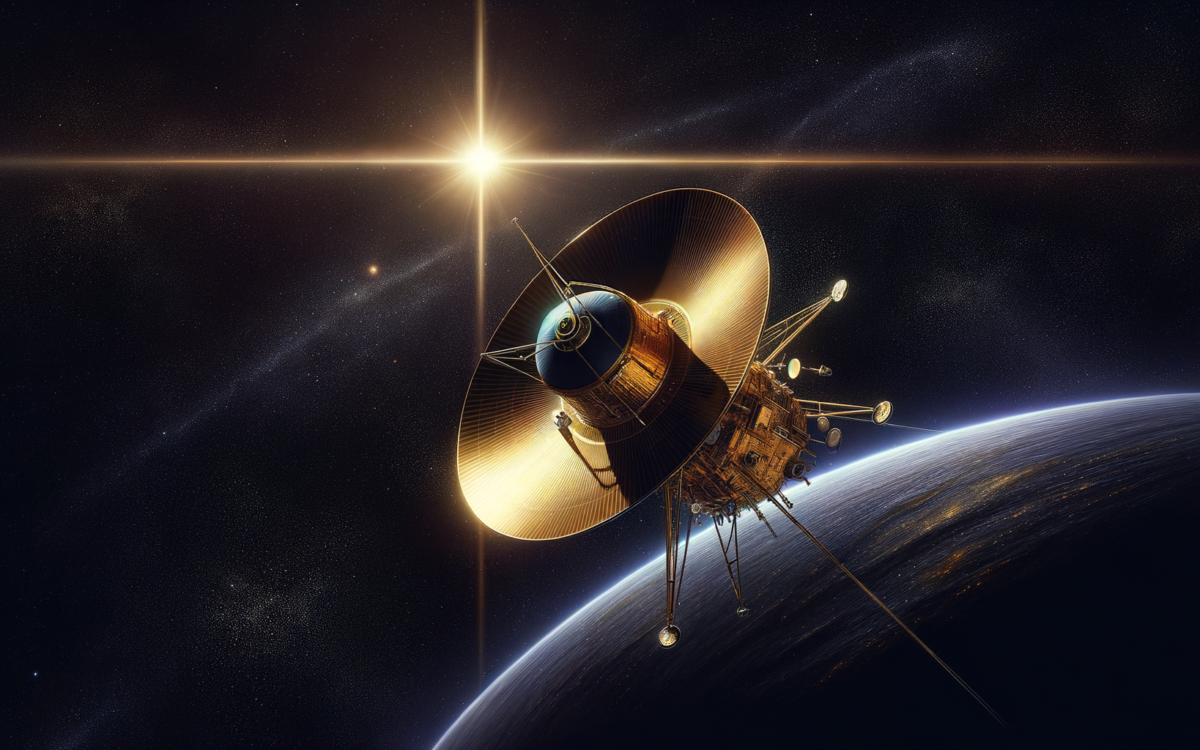Voyager 1’s Intergalactic SOS: Back in Business!
-
Voyager 1 resumes sending data to Earth after a mysterious glitch rendered its messages incomprehensible.
-
NASA engineers tackle a 15-billion-mile tech support call, reviving the probe’s 1970s-era computer.
-
Despite the hitch, the probe’s age, and the cosmic distance, there’s hope to fully restore its scientific missions.
A Cosmic Comeback
In a story that feels like it’s plucked straight from a sci-fi saga, NASA’s venerable Voyager 1 spacecraft is talking sensibly with Earth again. Imagine, if you will, a device so old it could almost apply for an AARP card, overcoming the silence of space to whisper its secrets across 15 billion miles of the cosmic void. Engineers at NASA’s Jet Propulsion Laboratory performed what could only be described as interstellar IT wizardry. They recoded a slice of the craft’s memory, tackling a problem that began in November 2023. Previously, this trailblazer of humanity’s spacefaring dreams had replaced its detailed reports on health and scientific measurements with an unintelligible mumble.
Distance, Delay, and Determination
The journey of a radio signal to Voyager 1 and back is not for the impatient. Taking more than 22 hours each way, the communication lag ensures that every step of troubleshooting is a lesson in patience and precision. Yet, the team’s efforts bore fruit, reviving the Flight Data Subsystem’s ability to send back valuable engineering data, including the craft’s power status. It’s a testament to human ingenuity that this distant ambassador of our planet remains in good health, despite a hitch that left scientists scratching their heads.
Challenges of Cosmic Proportions
The culprit? Possibly a cosmic ray or the simple toll of time on a chip vital for memory storage, impacting the craft’s coding. The road to a full recovery for Voyager 1 is fraught with challenges, not least of which is the age of its systems. Much of the documentation and code, relics from an era when paper was king, remain undigitized. The task ahead is daunting, requiring weeks, if not more, to navigate through this analog legacy.
Interstellar Ambassadors
Voyager 1, along with its twin Voyager 2, represents humanity’s furthest reach into space. Having completed its primary mission to explore Jupiter and Saturn, Voyager 1 now sails through interstellar space, continuing to contribute to our understanding of cosmic phenomena, from magnetic fields to plasma environments. Despite the recent communication blackout, scientists remain hopeful for a resurgence of data, eager to further unravel the mysteries that lie beyond our solar system.
Jon’s Take
As we marvel at the resilience of Voyager 1 and the dedication of the team working tirelessly across billions of miles, it’s a poignant reminder of our enduring quest for knowledge. The silence from this distant explorer was a stark reminder of the vastness and the unknowns that lie beyond our tiny blue dot. But as Voyager 1 once again shares its tales from the edges of our solar bubble, it’s clear that our desire to explore and understand the cosmos knows no bounds. The truth isn’t just out there – it’s being transmitted across the void, waiting for us to listen.
Original Article




